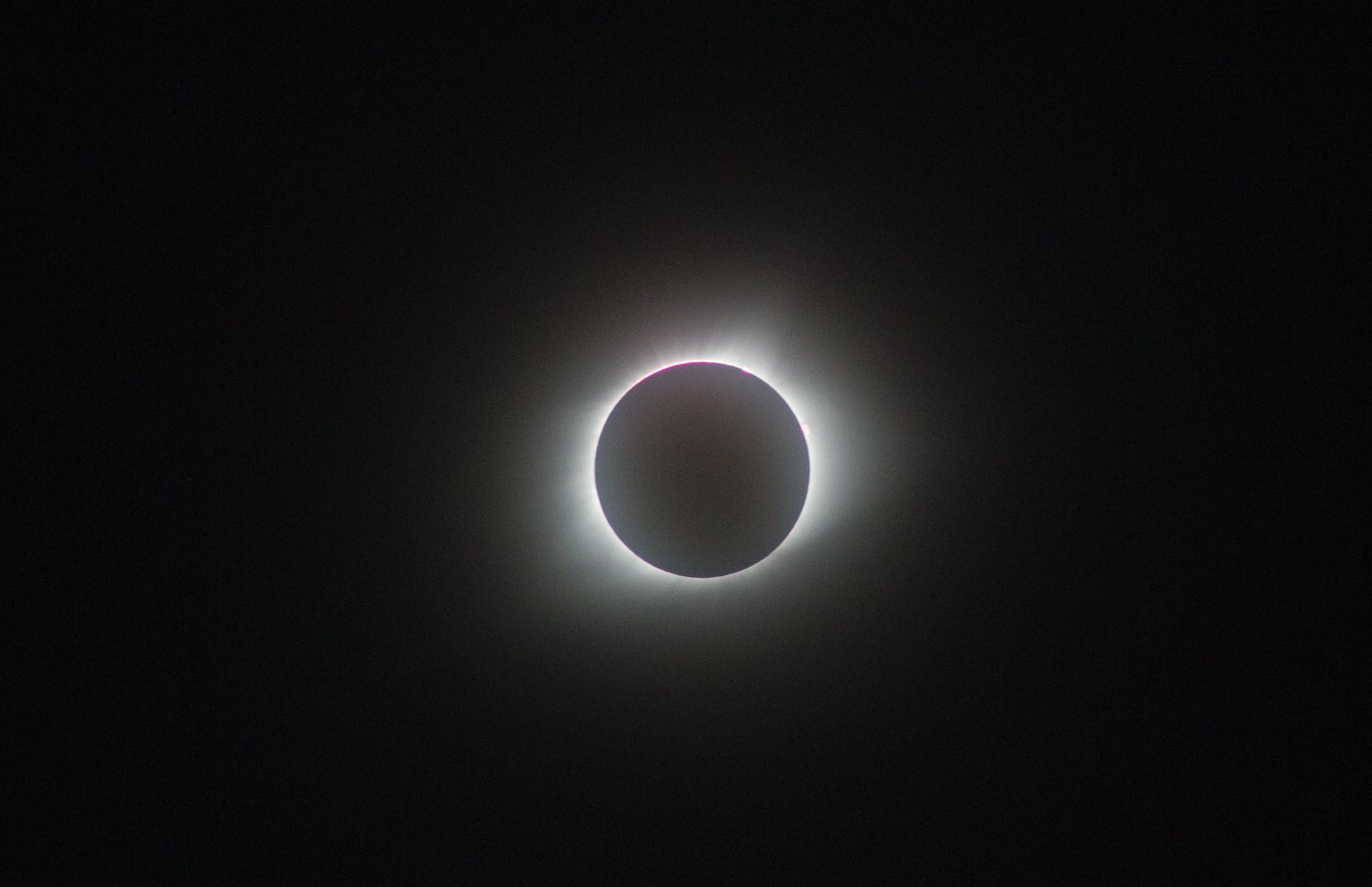Introduction
The universe has always fascinated humanity with its mysteries and wonders. Among the most captivating cosmic events are solar and lunar eclipses. These celestial ballets not only awe us with their breathtaking beauty but also provide valuable insights into the workings of our planet Earth and its radiant neighbor, the Sun.
In this extended exploration, we will embark on a cosmic journey to understand the mechanics of eclipses, their historical significance, and the invaluable knowledge they offer to scientists and stargazers alike. Get ready to delve deep into the celestial phenomena that have captured human imagination for centuries.
The Dance of Shadows: Understanding Eclipses
Solar Eclipses: When the Sun Takes a Bow
A solar eclipse occurs when the Moon moves between the Earth and the Sun, casting its shadow on our planet. This momentous event captivates observers worldwide, transforming day into night for a brief period. The rarity and spectacle of a solar eclipse have fascinated humans for millennia.
The Phases of a Solar Eclipse
A solar eclipse unfolds in several distinct phases, each offering a unique spectacle:
- Partial Eclipse: At the beginning, the Moon partially covers the Sun, creating a crescent shape in the sky.
- Totality: During this mesmerizing phase, the Moon completely obscures the Sun, revealing the Sun’s outer atmosphere—the solar corona. This brief window allows scientists to study the corona’s secrets.
- Diamond Ring Effect: As the Moon’s edge aligns perfectly with the Sun, a dazzling burst of light called the “diamond ring” appears just before totality.

The Great American Eclipse
In August 2017, the Great American Eclipse captured the hearts of millions across the United States. It was a total solar eclipse that spanned the continent from coast to coast, providing a rare opportunity for people to witness this celestial wonder. The event brought together astronomers, enthusiasts, and curious onlookers, underscoring the magnetic allure of solar eclipses.
Link 1: NASA’s Solar Eclipse Guide
Lunar Eclipses: Earth’s Shadow Play
While solar eclipses involve the Moon blocking the Sun, lunar eclipses are Earth’s turn to cast its shadow onto the Moon. This captivating phenomenon bathes the Moon in a deep, reddish hue, earning it the nickname “Blood Moon.”
The Beauty of Lunar Eclipses
Lunar eclipses have their own unique charm, with distinct phases:
- Penumbral Eclipse: The Moon enters Earth’s penumbral shadow, causing a subtle dimming of its surface.
- Partial Eclipse: A portion of the Moon enters Earth’s umbral shadow, resulting in a gradual darkening.
- Total Eclipse: The Moon is entirely immersed in Earth’s shadow, creating the striking Blood Moon effect.

The Super Blood Wolf Moon
In January 2019, skywatchers were treated to a rare celestial event—an event dubbed the “Super Blood Wolf Moon.” This total lunar eclipse, coinciding with a supermoon (when the Moon is closest to Earth in its orbit), provided a spectacular sight in the night sky. It was an event that combined both scientific curiosity and cultural fascination.
Link 2: Time and Date’s Lunar Eclipse Calendar
Eclipse Paths and Totality Zones
Eclipses do not occur randomly but follow specific paths across the Earth’s surface. These paths are known as “totality zones” for solar eclipses and “umbra paths” for lunar eclipses.
Chasing Eclipses Around the World
Eclipse chasers are a dedicated group of enthusiasts who travel the globe to witness these cosmic events in different locations. They follow eclipse paths to experience the beauty and scientific significance of eclipses in various settings.
Link 3: Eclipse Maps by Xavier Jubier
Eclipses Through History
Ancient Beliefs and Superstitions
Throughout history, eclipses have been met with a mix of awe and fear. Different cultures interpreted these celestial events in various ways. In ancient China, for instance, it was believed that a dragon devoured the Sun during a solar eclipse, prompting loud drumming and firecrackers to drive the dragon away.
Eclipses as Omens
Eclipses often found their way into the mythology and folklore of ancient civilizations. They were seen as omens, often foretelling significant events or changes in the world. Such beliefs highlight the powerful impression eclipses made on early human societies.
Eclipses as Scientific Milestones
The Age of Enlightenment marked a turning point in the understanding of eclipses. Scientists like Edmund Halley and Edmond Halley made precise predictions about the timing and locations of eclipses, helping demystify these phenomena.
Capturing Eclipses on Camera
The invention of photography in the 19th century opened new possibilities for documenting eclipses. Scientists and photographers captured these events on film, allowing for detailed analysis and preservation of eclipse records.
Eclipses in Modern Times
Today, eclipses continue to inspire wonder and curiosity. They are no longer omens but opportunities for scientific discovery. Astronomers eagerly await eclipses to conduct experiments and observations that are otherwise impossible.
Solar Eclipses and Solar Research
Eclipses provide a unique opportunity to study the Sun’s outer atmosphere, the solar corona. Scientists have used advancements in technology to explore the mysteries of this region during total solar eclipses.
Link 4: Solar Eclipse Expeditions by NASA
Solar Eclipses: Windows to the Sun
Probing the Solar Corona
One of the most intriguing aspects of solar eclipses is the chance to study the Sun’s corona. This outer layer of the Sun’s atmosphere is usually obscured by the Sun’s intense glare. However, during totality, when the Moon fully covers the Sun, the corona becomes visible.
Scientific Instruments and Eclipse Expeditions
Scientists have used solar eclipses to develop and test innovative instruments. For example, the discovery of helium in the Sun’s corona during a solar eclipse in 1868 was a groundbreaking moment in astrophysics.
Unlocking Solar Secrets
Solar eclipses have provided valuable insights into the Sun’s magnetic field, solar flares, and the solar wind. These phenomena play a crucial role in our understanding of space weather and its impact on Earth.
Eclipses and Einstein’s Theory of Relativity
In 1919, a solar eclipse offered a unique opportunity to test Albert Einstein’s theory of general relativity. The bending of starlight around the Sun during the eclipse confirmed Einstein’s predictions, elevating him to scientific stardom.
Lunar Eclipses: Peering into Earth’s Atmosphere
Earth’s Shadow and the Reddish Glow
During a lunar eclipse, Earth’s atmosphere scatters sunlight, allowing only the longer wavelengths to reach the Moon. This scattering gives the Moon its characteristic reddish hue—a phenomenon known as Rayleigh scattering.
Studying Earth’s Atmosphere
Lunar eclipses provide a chance to study Earth’s atmosphere indirectly. By analyzing the color and intensity of the lunar eclipse, scientists can gather information about the composition and health of our atmosphere.
Lunar Eclipse and Astronomy
Astronomers have been using lunar eclipses for centuries to calibrate telescopes and observe celestial objects without the interference of moonlight. The predictable occurrence of lunar eclipses makes them valuable for astronomical planning.
The Cultural Significance of Eclipses
Eclipses in Mythology and Religion
Eclipses have left an indelible mark on human culture and spirituality. In various mythologies and religions, they are often seen as cosmic omens or symbols of transformation.
Eclipses in Art and Literature
Artists and writers have drawn inspiration from eclipses throughout history. From Vincent van Gogh’s “The Starry Night” to Jules Verne’s “From the Earth to the Moon,” these celestial events have left an artistic legacy.
Eclipse Tourism: Chasing Shadows
Eclipse tourism has gained popularity in recent years, with enthusiasts traveling to remote corners of the world to witness these cosmic spectacles. The Great American Eclipse of 2017, for example, attracted millions of spectators.
The Eclipse Chasers
Eclipse chasers are a dedicated community of individuals who traverse the globe in pursuit of the perfect eclipse experience. They often share their adventures and expertise, fostering a sense of camaraderie among those who share their passion.
The Future of Eclipse Exploration
As technology advances and our understanding of the universe deepens, eclipses will continue to play a vital role in scientific research and public engagement. Upcoming missions and expeditions aim to unlock even more secrets of the cosmos.
Total Solar Eclipse in Antarctica
Antarctica, with its pristine skies and unique geographic location, will be the stage for a rare total solar eclipse in the near future. This event promises to be a pivotal moment for researchers studying the solar corona and the Earth’s polar regions.
Eclipses Beyond Our Solar System
Scientists are now exploring the possibility of detecting eclipses in distant star systems. Observing exoplanetary eclipses could provide valuable insights into the composition and atmospheres of these distant worlds.
Conclusion
Eclipses are more than just celestial phenomena; they are windows to the universe, offering insights into both the Sun and Earth. From ancient superstitions to cutting-edge scientific discoveries, these cosmic events have captivated humanity for centuries. As we look to the future, the allure of eclipses will persist, driving us to explore the cosmos and unlock its mysteries.
With every eclipse, we are reminded of our place in the vast expanse of the universe. These celestial dances serve as a powerful reminder of the beauty, wonder, and interconnectedness of the cosmos. Whether you are a seasoned astronomer or a casual skygazer, witnessing an eclipse is a humbling and awe-inspiring experience that leaves an indelible mark on the human soul. So, mark your calendars and prepare to be enchanted by the next celestial spectacle in the ever-unfolding cosmic drama.

